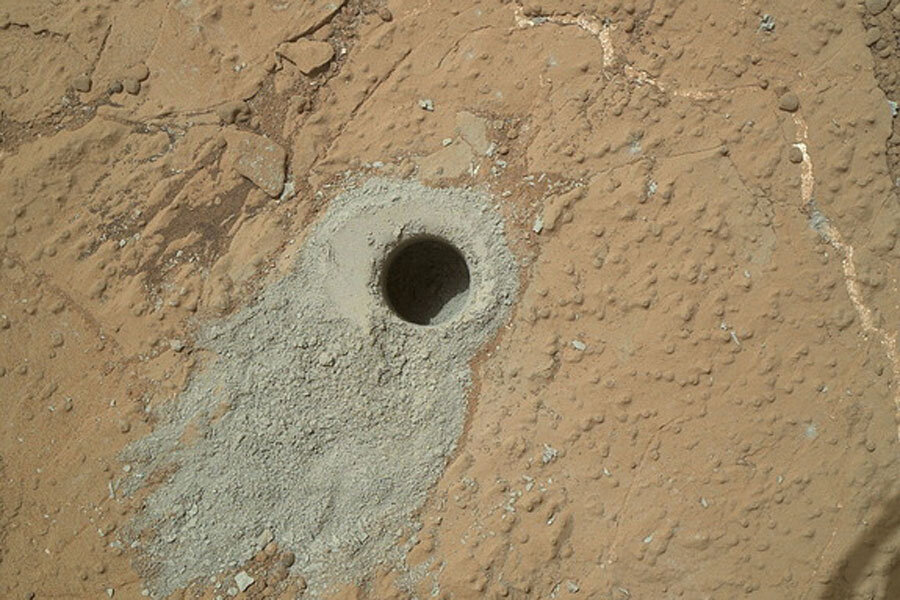How's the water on Mars? Curiosity rover finds out.
Loading...
NASA's Curiosity rover is continuing to help scientists piece together the mystery of how Mars lost its surface water over the course of billions of years.
The rover drilled into a piece of Martian rock called Cumberland and found some ancient water hidden within it. Researchers were then able to test a key ratio in the water with Curiosity's onboard instruments to gather more data about when Mars started to lose its water, NASA officials said. In the same sample, Curiosity also detected the first organic molecules it has found. Mission scientists announced the discovery in a news conference today (Dec. 15) at the American Geophysical Union's convention in San Francisco, where they also unveiled Curiosity's first detection of methane on Mars.
"It's really interesting that our measurements from Curiosity of gases extracted from ancient rocks can tell us about loss of water from Mars," Paul Mahaffy, Curiosity's SAM (Sample Analysis at Mars) instrument principal investigator at NASA's Goddard Space Flight Center in Greenbelt, Maryland, said in a statement. [Photos: The Search for Water on Mars]
Curiosity measured the ratio of deuterium (heavy hydrogen) to "normal" hydrogen. This D-to-H ratio can help scientists see how long it takes for water molecules to escape, because the lighter hydrogen molecules fly toward the upper atmosphere more freely than deuterium does.
The D-to-H ratio in Cumberland is about half the ratio found in the Martian atmosphere's water vapor today, NASA officials said. This suggests that the planet lost much of its surface water after the Cumberland rock formed, space agency officials added in the same statement.
But the water sample is also about three times "heavier" than Earth's oceans. This means that if Mars' surface water started off with a D-to-H ratio like Earth's, then most of the Martian water likely disappeared before Cumberland formed about 3.9 billion to 4.6 billion years ago.
The Cumberland measurement fills in a gap for scientists studying different epochs of Martian geological evolution. This sampling marks the first time scientists have been able to measure what the water on Mars may have been like during the Hesperian period, when this rock was formed, said Mahaffy, who is the lead author of a Mars water study published in the journal Science this week.
Previously, scientists have used Martian meteorites on Earth to sample Martian water; however, none of those space rocks date back to the Hesperian period.
"You have the whole period from 2.5 billion to 4 billion years old, and there's no data that we have from Mars meteorites just because we haven't found any yet, I guess," Mahaffy told Space.com. "So, it's very gratifying to be able to fill in that picture a little bit."
Follow Miriam Kramer @mirikramer. Follow us @Spacedotcom, Facebook and Google+. Original article onSpace.com.
- Mars Could Have Supported Life, NASA Finds | Video
- Mars Rover Curiosity's 7 Biggest Discoveries (So Far)
- A 'Curiosity' Quiz: How Well Do You Know NASA's Newest Mars Rover?
Copyright 2014 SPACE.com, a TechMediaNetwork company. All rights reserved. This material may not be published, broadcast, rewritten or redistributed.





